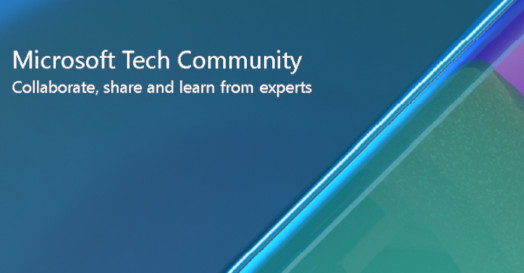Azure Service Fabric managed clusters 2021-11-01-preview release

We are excited to announce the public preview of autoscaling and new functionality via 2021-11-01-preview API. This release follows our initial August announcement of the 2021-07-01-preview API that included support for bring your own network, bring your own load balancer, and IPv4/IPv6 dual-stack networking. Customers such as Power Query Online, Azure Backup, Hardware Health Service, and Azure DNS have requested enhancements in the areas of Management and Scaling as well as Networking and Security. The November release enhances these areas and demonstrates our continued investments in the Azure Service Fabric managed clusters service making it the best choice for most Azure Service Fabric customers. These features are available in all public regions and will be GA, along with the July preview API, in 1st quarter of 2022.
Autoscaling
With autoscaling, customers can eliminate the operational overhead associated with manually scaling their workloads. The managed cluster model provides important improvements over the classic model. The resource provider manages the scaling operation end-to-end over multiple components including Compute, Networking, and Service Fabric. This directly results in a safer, faster, and more predictable experience for our customers. Autoscaling can be enabled on a secondary node type and supports all platform metrics available from Azure Monitor. See the autoscaling how-to to enable for your workloads.
Bring your own load balancer – Internal LB
Bring your own load balancer has been simplified to enable customers to configure an internal LB, without the complexity of configuring an external load balancer. This is achieved by using the default managed cluster public load balancer for external connectivity requirements. See the configure network settings for how to configure an Internal load balancer.
Auxiliary Subnets
Auxiliary Subnets provide the ability to support additional network scenarios that do not require a node type such as private link service and bastion hosts. Customers can now easily add additional Subnets for scenarios like these on the managed cluster resource. See configure network settings for how to configure Auxiliary Subnets on a cluster resource.
Accelerated Networking
Accelerated networking enables single root I/O virtualization (SR-IOV) to a VMSS VM that is the underlying resource for node types. This high-performance path bypasses the host from the data path, which reduces latency, jitter, and CPU utilization for the most demanding network workloads on supported VM types. To enable accelerated networking, see the node type configuration options how-to.
Host level Encryption
Encryption at host improves on Azure Disk encryption by supporting any OS types and images, including custom images, for your VMs by encrypting data in the Azure Storage service. This method does not use your VM's CPU nor does it impact your VM's performance enabling workloads to fully use all of the VM SKUs resources. See enable disk encryption for how to configure on a node type.
Multiple Managed Disks
Customers can now easily configure additional managed disks to be created for node types within a cluster. Additionally, you can configure a specific drive letter, disk type, and size for each additional managed disk. See node type configuration options for how to configure additional disks.
Configure Primary Data Disk Drive Letter
You can now specify and retrieve the Service Fabric primary data disk letter. See node type configuration options for how to specify the drive letter.
Learn more
If you would like to learn more about the service in general, head over to the Service Fabric managed clusters documentation or use the following Quickstart. We also have additional resources including how-to documentation and cluster templates. You can view the public feature roadmap and provide feedback on the Service Fabric GitHub repo.
Published on:
Learn moreRelated posts
Automating Business PDFs Using Azure Document Intelligence and Power Automate
In today’s data-driven enterprises, critical business information often arrives in the form of PDFs—bank statements, invoices, policy document...
Azure Developer CLI (azd) Dec 2025 – Extensions Enhancements, Foundry Rebranding, and Azure Pipelines Improvements
This post announces the December release of the Azure Developer CLI (`azd`). The post Azure Developer CLI (azd) Dec 2025 – Extensions En...
Unlock the power of distributed graph databases with JanusGraph and Azure Apache Cassandra
Connecting the Dots: How Graph Databases Drive Innovation In today’s data-rich world, organizations face challenges that go beyond simple tabl...
Azure Boards integration with GitHub Copilot
A few months ago we introduced the Azure Boards integration with GitHub Copilot in private preview. The goal was simple: allow teams to take a...
Microsoft Dataverse – Monitor batch workloads with Azure Monitor Application Insights
We are announcing the ability to monitor batch workload telemetry in Azure Monitor Application Insights for finance and operations apps in Mic...
Copilot Studio: Connect An Azure SQL Database As Knowledge
Copilot Studio can connect to an Azure SQL database and use its structured data as ... The post Copilot Studio: Connect An Azure SQL Database ...
Retirement of Global Personal Access Tokens in Azure DevOps
In the new year, we’ll be retiring the Global Personal Access Token (PAT) type in Azure DevOps. Global PATs allow users to authenticate across...
Azure Cosmos DB vNext Emulator: Query and Observability Enhancements
The Azure Cosmos DB Linux-based vNext emulator (preview) is a local version of the Azure Cosmos DB service that runs as a Docker container on ...